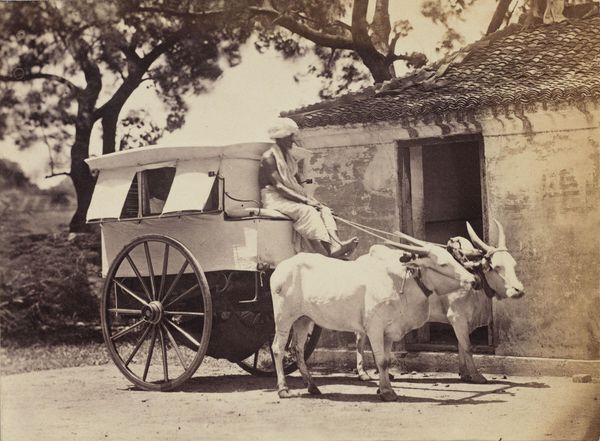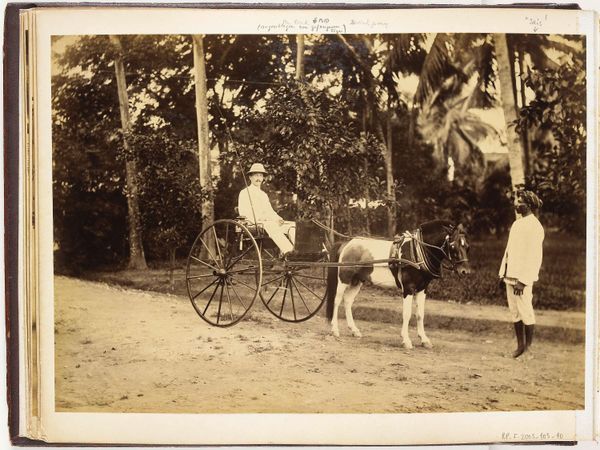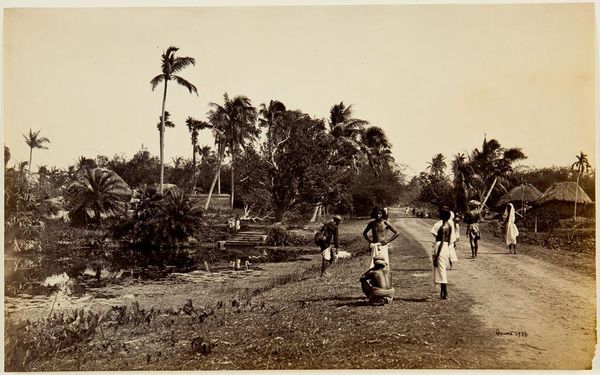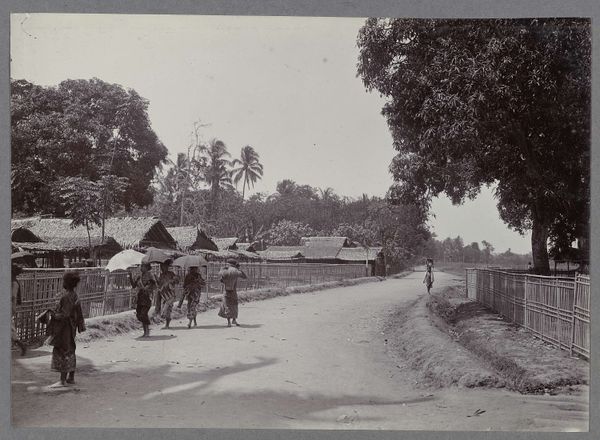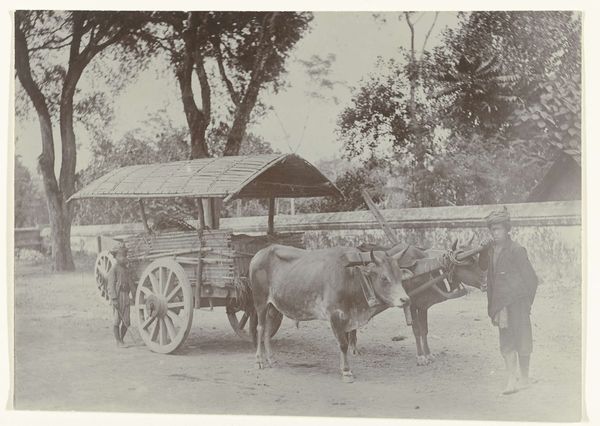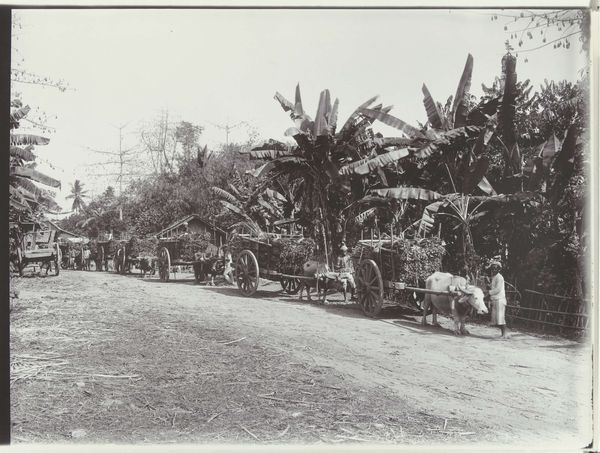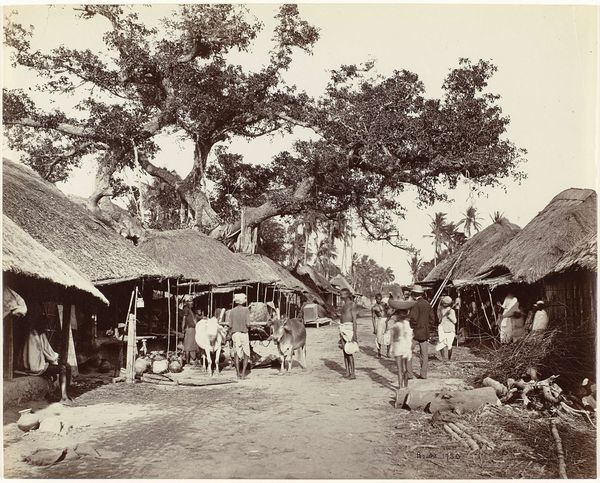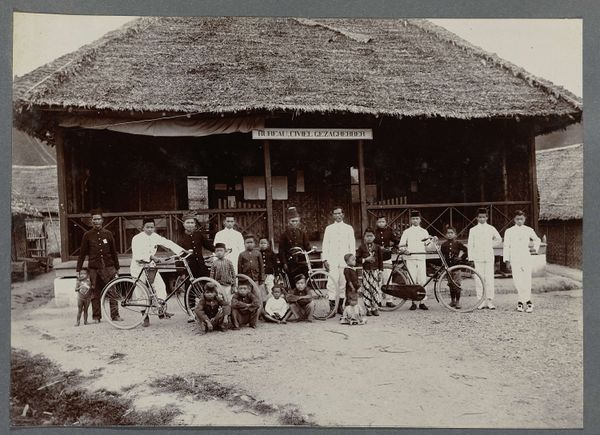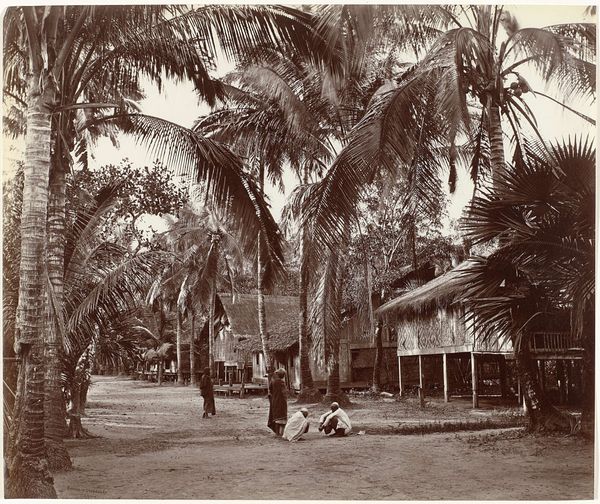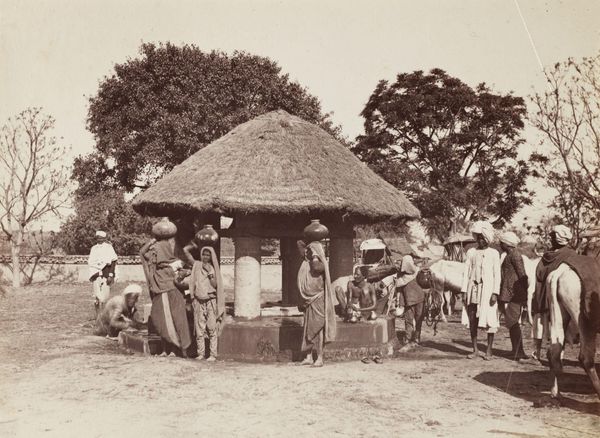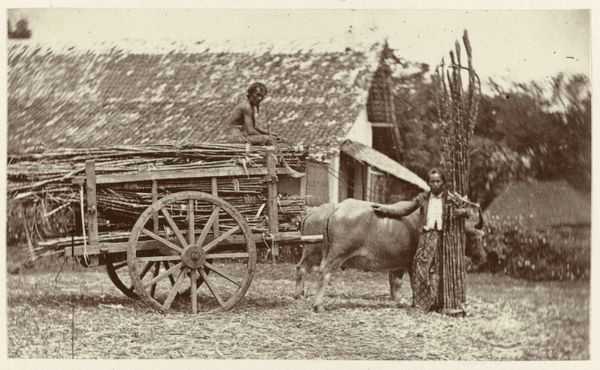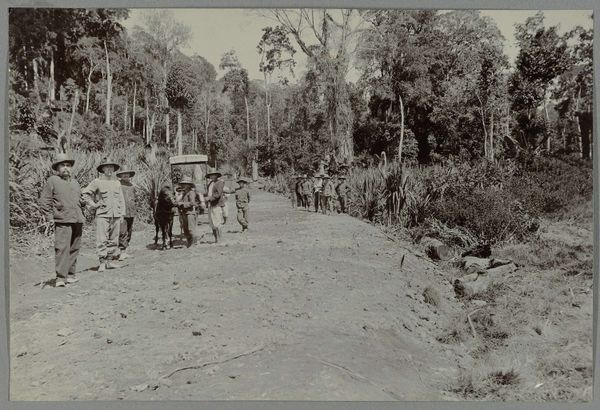
photography, gelatin-silver-print
#
portrait
#
16_19th-century
#
asian-art
#
landscape
#
photography
#
historical photography
#
orientalism
#
gelatin-silver-print
Dimensions: height 57 mm, width 93 mm
Copyright: Rijks Museum: Open Domain
Curator: Let's explore this evocative gelatin-silver print from somewhere between 1860 and 1880, entitled "Koetsier met rijtuig", or "Coachman with Carriage". Editor: It strikes me with a certain quietude. The light is soft, almost muted, lending a stillness to the entire scene, a certain colonial-era languor. You can almost feel the humidity. Curator: Precisely. Look closer at the coachman's attire. The details in his traditional clothing speak volumes. It reveals a fusion of cultural identities, doesn't it? Almost like an intentional staging of local life for the camera’s gaze, fitting neatly into Orientalist tropes. Editor: Yes, but I’m also thinking about the material conditions required for such a photograph to exist at this time. Think about the cumbersome equipment, the silver nitrate, the specialized paper – these materials tell a story of resource extraction and colonial trade routes. It's literally a photograph produced through imperial processes. Curator: Indeed. The photograph's ability to preserve a moment and project it across time carries tremendous symbolic weight. How were photographs received? How did they shape perceptions of “the orient” back home? This image solidifies certain concepts, but can it alter others? Editor: Good points. The photograph presents itself as documentation, but of course there’s manipulation and framing at play. We see here a material record intertwined with constructed narratives, disseminated widely because of developments in manufacturing and print technologies. Curator: Note also how the landscape serves to situate and exoticize. The details, even the somewhat obscured thatched roofs in the background, play to that sense of a remote, distinctly “other” place. The picture plane as stage for cultural performance. Editor: It’s all deeply embedded within that photographic process itself, isn’t it? The transportation, labor, the chemistries – everything contributing to the consumption of these images within Europe, bolstering the colonial imaginary through cheap reproduction and broad distribution. Curator: This one photograph encapsulates such a complex layering of meanings and materials, a microcosm of its historical moment. Editor: A stark reminder of how even seemingly straightforward images carry profound implications about power, representation, and the lasting echoes of colonial exchange.
Comments
No comments
Be the first to comment and join the conversation on the ultimate creative platform.
